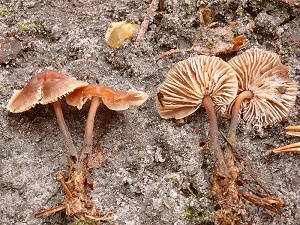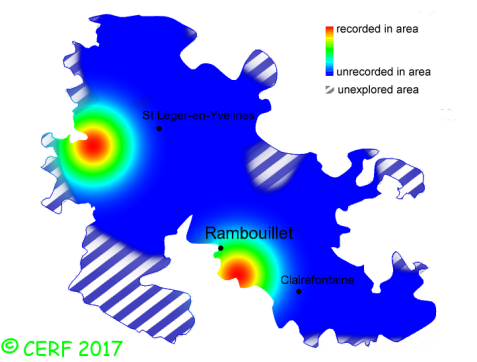| Gymnopus brassicolens (Romagn.) Antonín & Noordel. |
|
|
|
|
|
|
The cap is reddish brown to ochraceous brown, darker towards centre, hygrophanous, getting much paler when drying, convex then expanded to slightly depressed, sometimes with a central umbo; its margin is striate when moist, become smooth when drying, sharp, often upturned when aging. The cap surface is smooth, matt, not viscid nor sticky. The stem is reddish brown to tawny at the apes, getting darker towards base up to becoming black, pruinose, tapering towards base, without ring. The flesh is whitish to pale brownish, unchanging; its taste is mild, not distinctive; the odour is unpleasant, of rotten cabbage, garlic, or radish; its texture is fibrous. The gills are whitish then stained with reddish-brown when mature, adnate, emarginate to almost free, distant (nb of gills per 90° ~ 10 ). The spore print is white. This species is saprophytic. It grows on wood (also on the ground, on buried wood), in broad-leaved woods, on a rather calcareous soil, on leaf litter or dead wood, mostly of beech. The fruiting period takes place from July to November.
Chemical tests : none. Distinctive features : reddish-brown cap, darker towards centre, hygrophanous and becoming pale when drying, with a striate margin; brown stem, darker than cap, blackening from the base up, not strongly attached to substrate; strong unpleasant odour of rotten cabbage or garlic; on beech leaf litter or wood debris Gymnopus brassicolens is rare and localised in the forest of Rambouillet, and is quite rare, more generally speaking . | ||
|
page updated on 14/01/18

